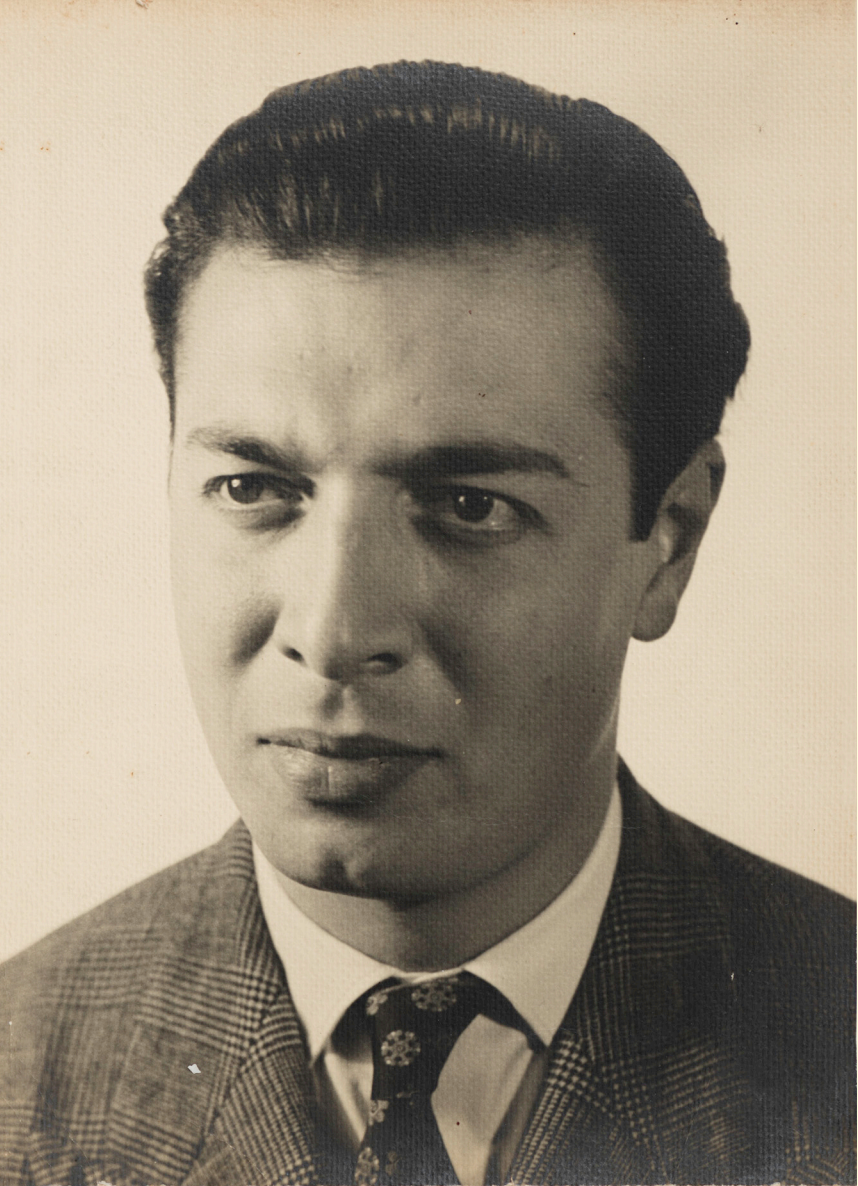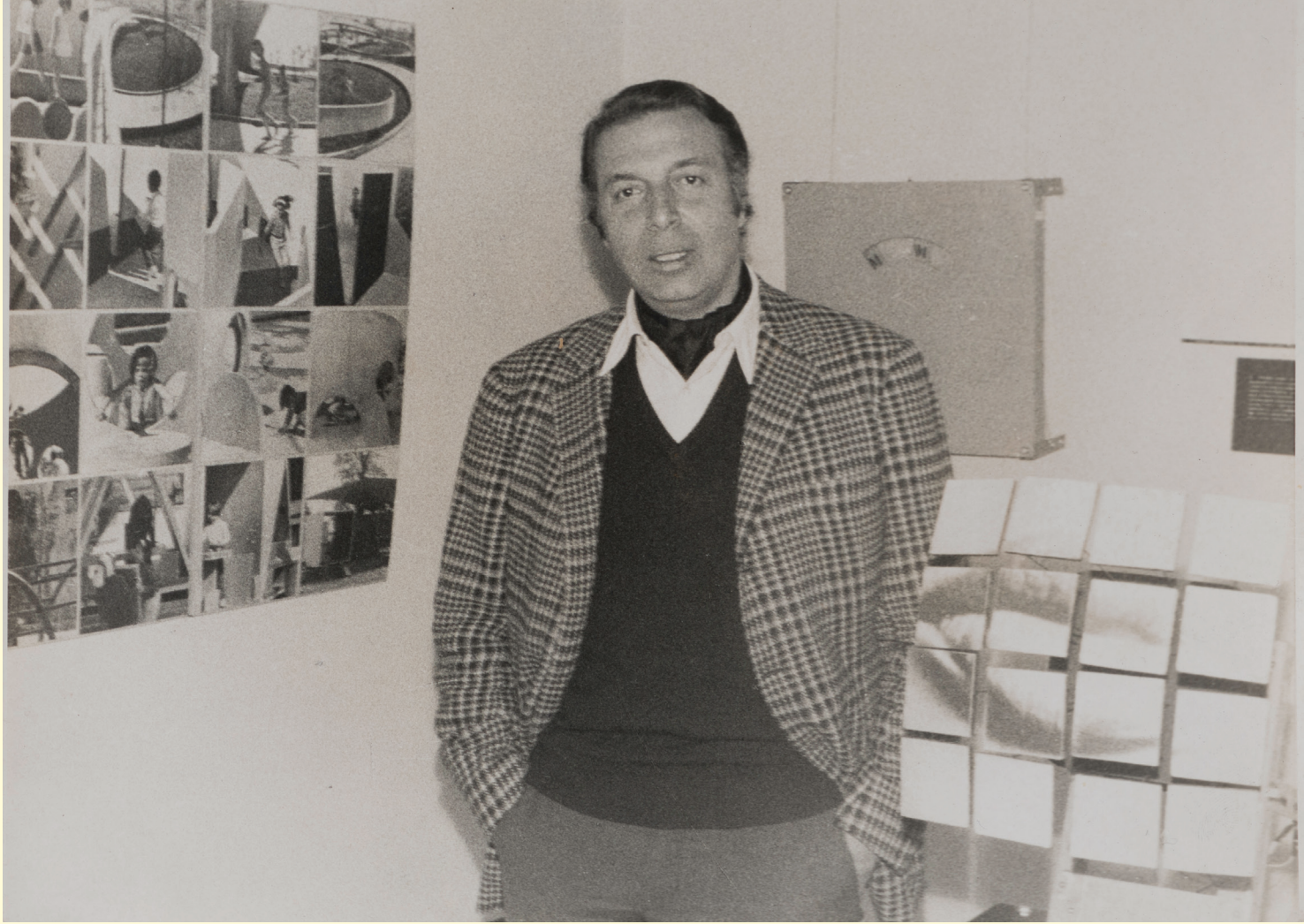LIFE HIGHLIGHTS
1942
For the first time, he exhibits his works at Teatro Argentina, Rome.
1941-1945
Creates caricatures for Funny Face Shop and satirical Petirosso newspaper. Had a close relationship with Federico Fellini, Giulio Turcato, Pasquale Santoro, Enrico Prampolini, Pietro Consagra and others, Rome.
1945
Takes part in the foundation of the Associazione Artistica Internazionale Indipendente, a.k.a. Art Club, dedicated to the development and dissemination of modern art, Rome
1946
Moves from Europe to Brazil, adopts the Brazilian nationality and settles down in São Paulo. Starts practicing as a journalist by writing art reviews and drawing caricatures for Diario Latino, published in Italian. Later he changes to Folha da Manhã newspaper, for which he works on political articles, art reviews and illustrations. Also contributes articles to A Noite newspaper. Comes into contact with Guilherme de Almeida, Menotti del Picchia and members of the Grupo Santa Helena, a spontaneous gathering of artists who shared a studio at the Palacete Santa Helena [Santa Helena Estate], torn down in 1971, downtown São Paulo.
1947
In February, alongside Italian painter and sculptor Bassano Vaccarini, he organizes a show of modern artists to inaugurate the Domus Galeria de Arte e Antiguidades [Domus Gallery of Art and Antiquities], São Paulo. Together with Bassano Vaccarini, he paints the murals of the Saint Rita’s altar in the Igreja Senhor Bom Jesus do Brás [Church of Lord Good Jesus of Brás], São Paulo. In April of that year, he meets Geraldo de Barros, Lothar Charoux and Luiz Sacilotto at the exhibition 19 Pintores [19 Painters] – Galeria Prestes Maia [Prestes Maia Gallery], União Cultural Brasil-Estados Unidos, São Paulo. In September, he travels to Rome. Returns to Brazil the following year as a delegate of the International Art Club and settles permanently in São Paulo
1948
Starts a research focused on abstractionism, moving away from the previous expressionist orientation.

1949
On 12 April, the São Paulo chapter of the International Art Club is created and chaired by Edoardo Bizzarri. Waldemar Cordeiro is elected vice president. Resumes work as a journalist by writing art reviews and making illustrations for Folha da Manhã newspaper
1950
Participates in meetings with artists and intellectuals, organized by Vilanova Artigas, against the creation and administration of the Biennial of the Museu de Arte Moderna de São Paulo [São Paulo Museum of Modern Art] MAM/SP.
1952
Founds, in São Paulo, the Grupo Ruptura [Rupture Group] along with Anatol Wladislaw, Geraldo de Barros, Leopoldo Haar, Lothar Charoux, Luiz Sacilotto and Kazmer Féjer and becomes the group leader and main theoretician. The group holds the exhibition Ruptura [Rupture] at MAM/SP [São Paulo Museum of Modern Art], when Cordeiro makes closer contact with poets Décio Pignatari, Augusto de Campos and Haroldo de Campos, who join the concrete movement.
1953
Between 26 April and 2 May, participates in the Continental Congress of Culture in Santiago, Chile, together with Décio Pignatari and Afonso Schmidt, on a trip funded by the Brazilian Communist Party. Stopping over in Buenos Aires, they come into contact with the Argentinian concrete art group of Tomás Maldonado. Marries Helena Kohn.
1954
Starts practicing as a landscape designer
1956-57
Organizes, with one of the Grupo Ruptura members, the 1st Exposição Nacional de Arte Concreta [National Exhibition of Concrete Art], which was later expanded to accommodate artists and poets of the Grupo Frente [Frente Group] from Rio de Janeiro. The exhibition marks the national launch of concrete poetry. MAM/SP [São Paulo Museum of Modern Art], 4 to 18 December 1956; MEC [Ministry of Education and Culture], Rio de Janeiro, February 1957.

1958
Waldemar Cordeiro, Hermelindo Fiaminghi, Kazmer Féjer, Maurício Nogueira Lima and Décio Pignatari open a group studio in Brás, a neighborhood in downtown São Paulo.
1959
Décio Pignatari and Hermelindo Fiaminghi break off relations with Cordeiro.
1960
Turns to a new period of concrete art focusing on structural aspects of color, the color-relation phase, and started painting with an industrial paint compressor and spray gun.
1963
Back to the brush in the phase of intuitive geometry. Develops a new research, in which he uses the technique of montage using mirrors, collage and incorporating tears on the canvas surface. Attempt to regroup the concreteart artists with new members by forming the Associação de Artes Visuais Novas Tendências [New Tendencies Association of Visual Arts] – Galeria NT [NT Gallery], São Paulo
1964
Travels to Europe, where he meets with the Groupe de Recherche d’Art Visuel, of Julio Le Parc, in Paris, coming into contact with Pop Art as well. Cordeiro creates the popcrete with Augusto de Campos; the works aimed at introducing a semantic approach into concrete art
1965-1966
Organizes the shows Propostas 65 e 66 [Proposals 65 and 66] at the MAB-Faap [Museum of Brazilian Art, Armando Alvares Penteado Foundation]

1968-1973
Works systematically with computer-aided art (arteônica) using laboratories at USP [University of São Paulo] and Unicamp [Campinas State University].
1969
Declines Pierre Restany’s invitation to join the special room dedicated to art and technology at the 10th Bienal Internacional de Artes de São Paulo [São Paulo Art Biennial] to express his solidarity with the protest formalized by the Associação Brasileira de Críticos de Arte [Brazilian Association of Art Critics].
1971
Organizes the exhibition Arteônica at MAB-Faap [Museum of Brazilian Art-Armando Alvares Penteado Foundation], São Paulo, March; and at the MAC/Campinas [Campinas Museum of Contemporary Art] in May.
1972
Establishes and manages the Centro de Processamento de Imagens, Instituto de Artes da Unicamp [Center of Image Processing, Unicamp Arts Institute] and designs a project for the Instituto de Artes (the implementation of which was discontinued owing to his sudden death), Campinas.
1973
Dies of a heart attack at the age of 48 in São Paulo.

